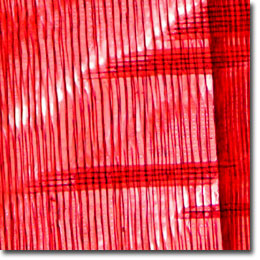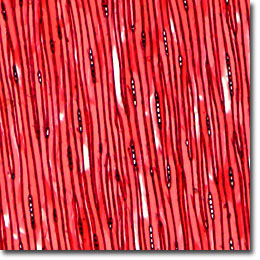The Northern White Cedar
The Northern White Cedar (Thuja occidentalis; often referred to as the Eastern White Cedar and the Eastern Arborvitae) is a softwood tree primarily found in wet sites as well as dry limestone ridges throughout the northeast United States and Canada from Nova Scotia to North Carolina. The sapwood is narrow and nearly white, while the heartwood is uniformly straw-brown.

Cross Section

Radial Section

Tangential Section
The white cedar is an unusually tall conifer, ranging in height from 50 to 70 feet with a beautiful pyramidal crown. Having a buttressed trunk at the base, the white cedar features reddish brown and furrowed bark. The dark green or golden brown leaves are fan-shaped and turn bronze in the winter. The tree has been the origin of numerous hybrids, can be propagated by seed (or from cuttings), and will grow and prosper in most soils, but does best in limed soil.
Cedar contains natural preservatives that make it one of the most decay-resistant and insect-tolerant woods available. This particular wood is very popular with craftsmen, because it can be easily worked by hand or with power tools. Northern white cedar is principally used for poles and posts, log cabins, railroad ties (the wood is so soft that it requires tie plates), rustic furniture, and ornate shingles. Other uses include boats and ships (especially canoe ribs), fishnet floats, woodenware, and novelties.
Microscopic examination of iron-alum hematoxylin and safranin stained thin sections (see the digital images presented above) reveals fine tracheids and bordered pits in a single row with tangential pitting present in the last few rows of late-wood tracheids. The pits are small and orbicular in shape, but uniform in size. Rays are uniseriate and one to eight cells in height. Longitudinal parenchyma is very sparse or zonate in a given ring.